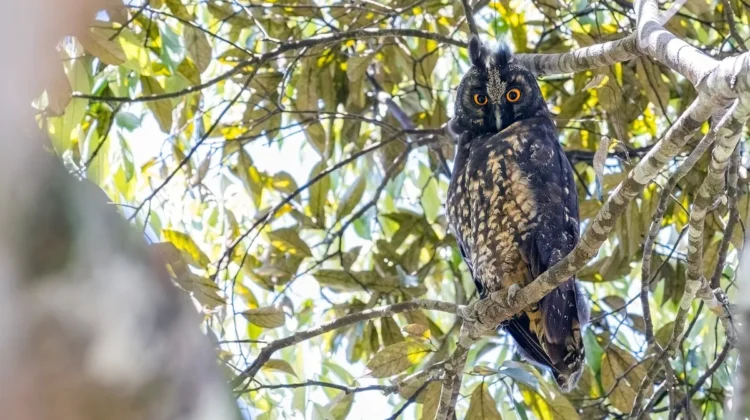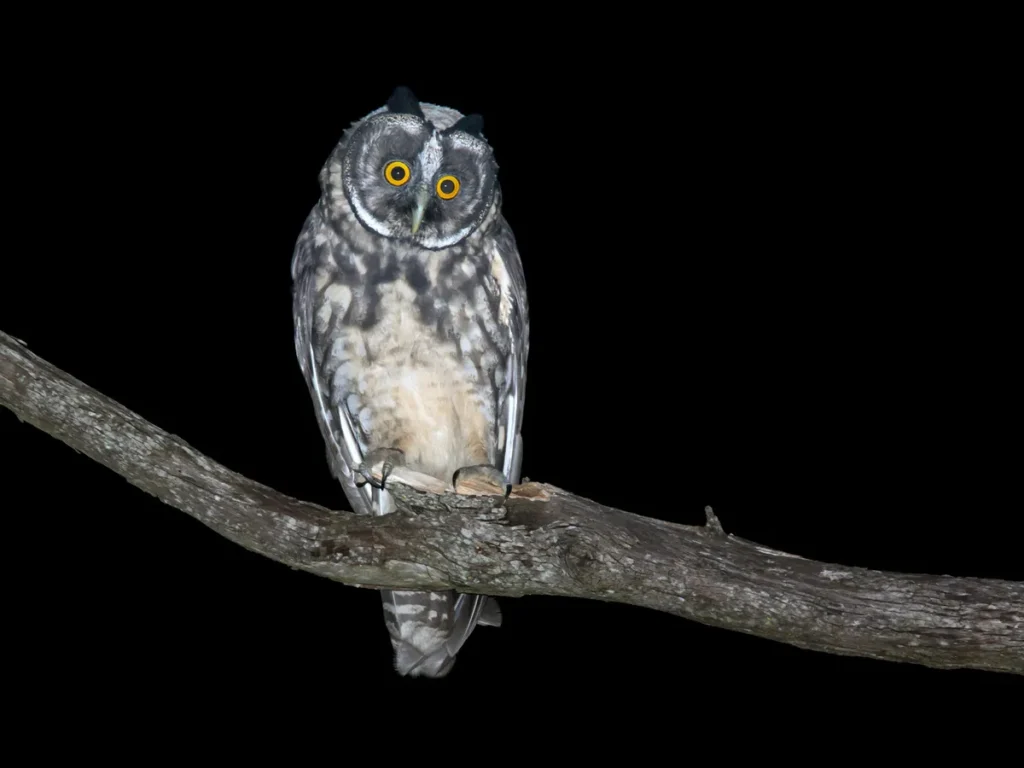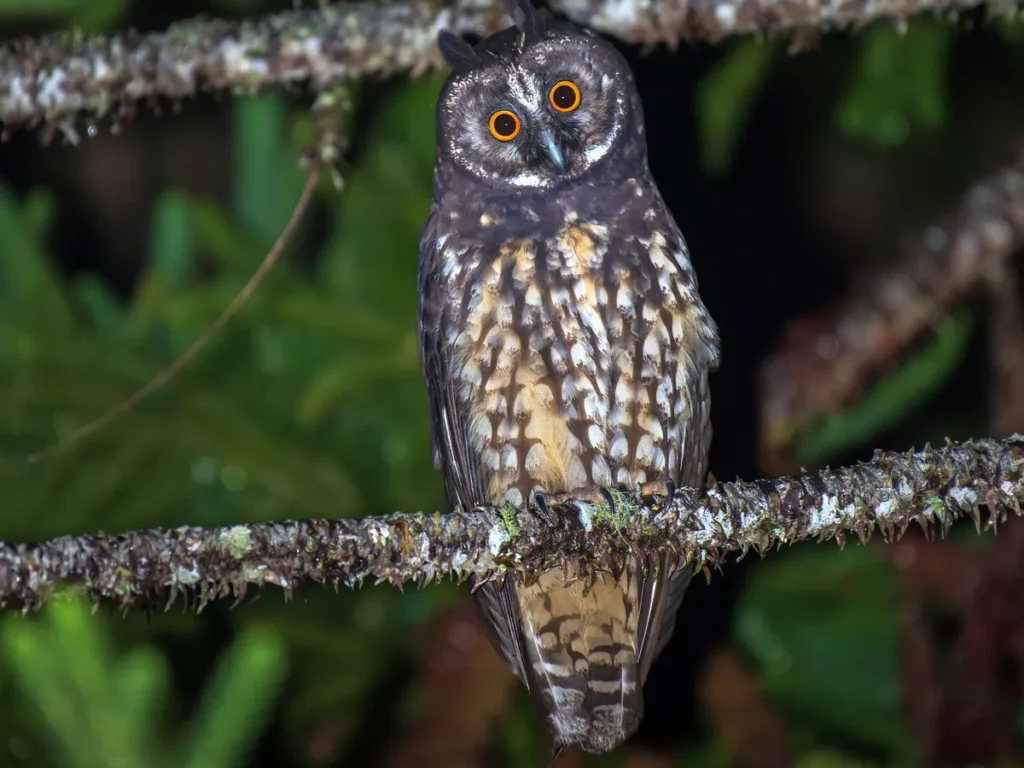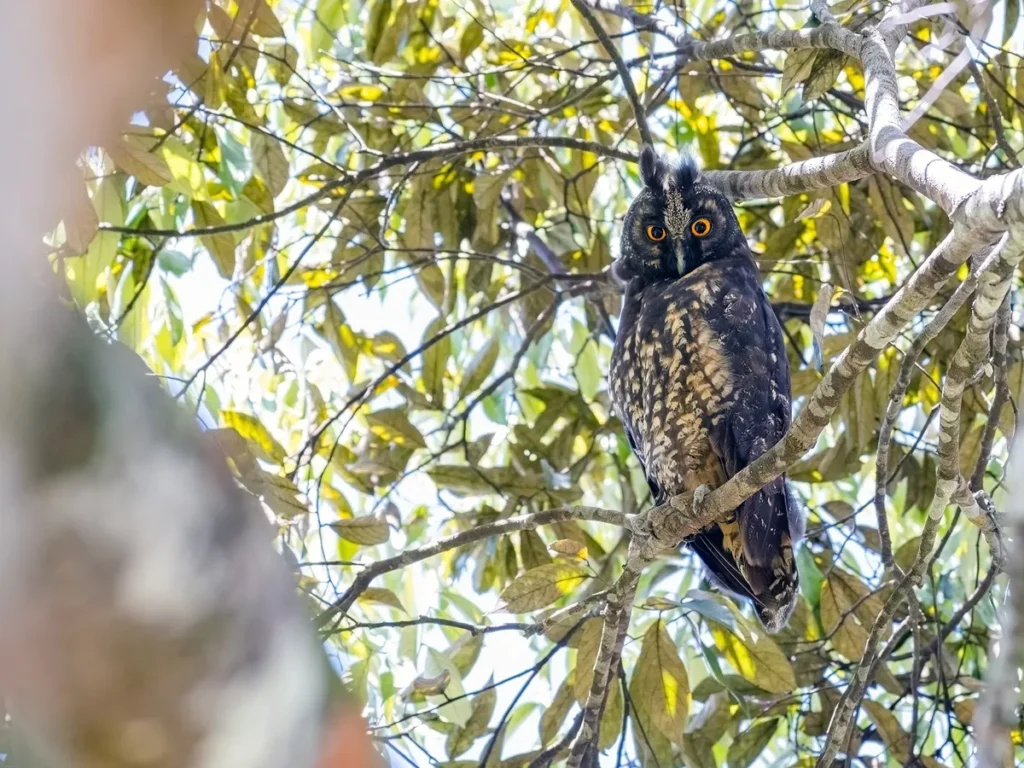
The Stygian Owl (Asio stygius) is a fascinating avian species known for its mysterious allure. In this article, we delve into the world of these enigmatic creatures, exploring their appearance, habitat, behavior, and more. Join us as we unravel the secrets of the Stygian Owl.
Discovering the Stygian Owl’s Unique Appearance
Stygian owls are easily recognizable due to their dark plumage. They sport a small blackish facial disk bordered by pale feathers, with striking dark ear tufts that set them apart. Their wings and back are predominantly dark, adorned with lighter buff streaks, while their breast and belly display pale buff coloring, accentuated by deep black-brown barring. One of their most captivating features is their piercing yellow eyes, which can appear fiery red in certain lighting conditions. The bill is blue-black, and their legs and feet are grayish-pink.

Sizing Up the Stygian Owl: How Big Are They?
These owls are moderately sized, comparable to barn owls and long-eared owls. Females, slightly larger and heavier than males, also boast longer wings.
- Length: 38 cm to 46 cm (15 in to 18 in)
- Wingspan: 96 cm to 110 cm (38 in to 43 in)
- Weight: 500 g to 700 g (1.1 lb to 1.5 lb)
The Enigmatic Calls of the Stygian Owl
Male Stygian owls emit repetitive deep “whoof” calls, punctuated by short intervals. In response, females produce a shrill “miah” scream. Excitement is conveyed through a noisy “wak-wak-wak,” while hungry owlets cry “cheet.”
A Glimpse into the Diet of Stygian Owls
Stygian owls primarily prey on birds, including species like the blue-black grassquit, eared doves, and lesser nothura. Bats also feature prominently in their diet, with frogs and insects occasionally making the menu. These owls hunt from perches, targeting roosting birds and catching bats in flight, distinguishing them from other owl species with a more rodent-focused diet.

Exploring the Habitat and Range of the Stygian Owl
Stygian owls are predominantly found in forested habitats, particularly in mountainous regions at elevations ranging from 700 m to 3000 m (2300 ft to 10,000 ft) above sea level. They are known to inhabit tropical rainforests and humid as well as semi-arid forested landscapes. While they are typically absent from low-lying regions, sightings in savannah environments have been reported in parts of Brazil and Belize.
A Closer Look at Stygian Owl Lifespan and Protection
Due to limited research, information on their lifespan and breeding age remains elusive. Stygian owls are known for intraguild predation, preying on their own species to reduce competition for food resources. They are protected under various local conservation acts in regions of their range, such as the Endangered Species Act in Mexico and the Brazilian Wildlife Protection Act.
Nesting, Breeding, and Behavior of Stygian Owls
Stygian owls do not construct their own nests but repurpose abandoned tree nests of other birds. Ground-level nests are occasionally used. Breeding is timed to coincide with the rainy season, with incubation, primarily by the female, lasting around 30 days. Clutches typically contain 1 to 3 plain white, rounded eggs. They are believed to be monogamous and often reunite to breed each year.

Unraveling the Mystery: Do Stygian Owls Migrate?
Stygian owls are generally considered permanent residents throughout their range, with no recorded migration patterns. Rare vagrant individuals have been sighted in southern parts of the United States, but they do not breed there.
Conclusion
The Stygian Owl, with its striking appearance, unique calls, and intriguing behavior, continues to captivate bird enthusiasts and researchers alike. Despite their elusive nature, these owls are a testament to the diversity of avian life, adding an air of mystique to the world of ornithology.

Leave a Reply